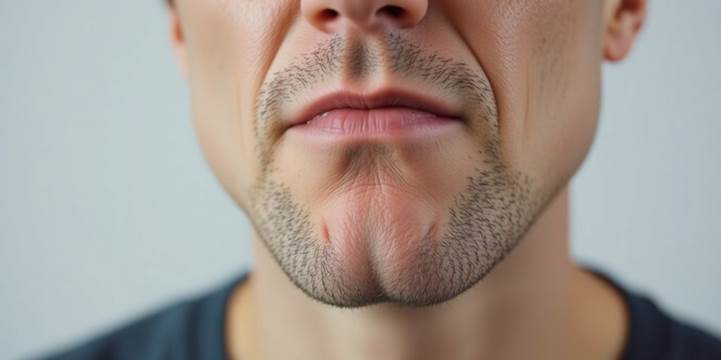Facial muscle training is gaining traction. People want defined jawlines. Two popular methods are jaw exercising and mewing.
Both aim to improve facial aesthetics. They also target jaw health. But they work in different ways.
This article explores both. It will help you decide what’s best for you.
What is Jaw Exercising?

Jaw exercising involves specific movements aimed at strengthening the muscles in your face, jaw, and neck. People do it hoping for jaw strength improvement and a more defined look. It’s become a popular trend, with many seeking jawline enhancement techniques through these exercises.
Some believe that consistent oral posture exercises can reshape the face. Others use tools like a jaw exerciser to achieve the same goal, with brands like StrongerGum claiming benefits such as a more defined jawline and strengthened facial muscles. But does it really work?
It’s important to understand what these exercises entail before jumping in. Let’s explore the benefits and common practices.
Benefits of Jaw Exercising
Some people report a more defined jawline. Others claim improved facial symmetry. But what are the real benefits?
- Potentially improves muscle tone in the face and neck.
- May contribute to a more youthful appearance.
- Could help with certain temporomandibular joint (TMJ) disorders.
While some find jaw exercising beneficial, results can vary. It’s not a guaranteed solution for everyone.
Common Jaw Exercises
There are many different jaw exercises out there. Some are simple, while others require special equipment.
One common exercise involves opening your mouth wide and repeating vowel sounds. Another uses resistance from your hand to work the jaw muscles. And of course, there’s the jaw exerciser, a tool designed to provide resistance during jaw movements.
Here are a few examples:
- Chin tucks: Pull your chin back to create a double chin, strengthening neck muscles.
- Jaw thrusts: Push your lower jaw forward, feeling the stretch in your jawline.
- Neck curls: Lie on your back and lift your head, engaging neck and jaw muscles.
Understanding Mewing
Mewing is all about tongue posture. It involves positioning the entire tongue against the roof of the mouth. The goal? To potentially reshape the jawline and improve facial aesthetics.
It’s named after Dr. John Mew, a British orthodontist. He advocated for orthotropics, focusing on jaw posture and tongue retraining. It’s worth noting that his methods have faced controversy within the dental community.
Done correctly, the entire tongue rests against the palate. This includes the back of the tongue. It’s a constant, conscious effort to maintain this posture.
The Principles of Mewing
At its core, mewing is about retraining tongue muscles. The aim is to achieve a natural, resting tongue position against the roof of the mouth. This supposedly influences facial structure over time.
It’s not just about the tongue; it involves proper head and neck posture. Lips should be sealed, and teeth gently touching. Consistency is key for any potential results.
Mewing emphasizes a holistic approach to facial development. It considers the interplay between tongue posture, breathing, and overall body alignment.
Benefits of Mewing
Many people pursue mewing for aesthetic reasons. A more defined jawline and improved facial symmetry are common goals. Some claim it can even address issues like a recessed chin.
Beyond aesthetics, some believe mewing can improve breathing. Proper tongue posture may open up airways. This could potentially alleviate snoring or sleep apnea symptoms.
The mewing benefits extend to potential dental improvements. Some proponents suggest it can help with teeth alignment. It’s important to note that scientific evidence supporting these claims is limited.
Similarities Between the Two Practices
Mewing requires consistent effort and awareness. It’s not a one-time fix but a continuous practice. Results, if any, take time and dedication.
Proper technique is crucial for mewing. Incorrect tongue placement could lead to unintended consequences. It’s important to research and understand the correct method.
Comparing Jaw Exercising and Mewing
Similarities Between the Two Practices
Both jaw exercising and mewing aim to improve facial aesthetics. They both focus on strengthening the muscles around the jaw and face. Both practices can be done at home, without special equipment.
Both techniques require consistency to potentially see results. People often turn to these methods seeking alternatives to surgery. Both mewing and jaw exercising are rooted in the idea of reshaping the face naturally.
Both practices have proponents who swear by their effectiveness. However, scientific evidence supporting their claims is limited. Many people combine these techniques with other lifestyle changes for better results.
Differences Between Jaw Exercising and Mewing
Jaw exercising typically involves active movements. This includes things like chewing gum or using resistance tools. Mewing, on the other hand, is more about tongue posture.
Jaw exercising directly targets the jaw muscles through repetitive motion. Mewing focuses on long-term postural changes of the tongue. One is active, the other is passive.
Jaw exercising is more straightforward and easier to understand. Mewing involves a more subtle and nuanced approach to facial posture.
Should You Do Both? Pros and Cons
So, jaw training and mewing – can they work together? It’s a question worth exploring. Combining them might seem like a fast track to results. But, it’s not always that simple.
Think of it like this: one focuses on external muscle development, the other on posture. Both have potential benefits, but also risks if not done right. Let’s break down the good and the bad.
It’s important to consider individual needs and goals. What works for one person might not work for another. Consulting with professionals is always a good idea.
Conclusion: Finding the Right Approach for You
It’s clear that both jaw training and mewing have potential benefits. However, they also come with considerations. The best approach really depends on individual goals and circumstances.
Consider consulting with professionals. Orthodontists or physical therapists can offer personalized advice.
Ultimately, the decision is yours. Weigh the pros and cons carefully.
Final Thoughts on Mewing and Jaw Training
In the end, whether you choose to try mewing, jaw training, or both really depends on your goals and comfort level. Mewing might seem appealing for its promise of a better jawline, but remember, there’s not much solid proof that it actually works. On the flip side, jaw training exercises can help strengthen your jaw, but they also come with their own risks if done incorrectly. If you’re thinking about either method, it’s a good idea to chat with a dental professional first. They can help you weigh the pros and cons and guide you on the best path for your oral health.















